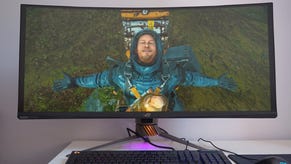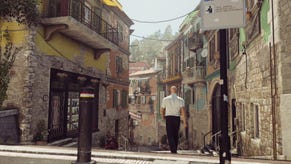Metro Exodus modder turns FSR 2.0 into AMD-compatible DLAA
Ditches the upscaling for sharper image quality
Modders have been getting busy with FSR 2.0, AMD’s latest, recently open source-ified, Nvidia DLSS-esque upscaling tech. First someone got FSR 2.0 working in Cyberpunk 2077, then someone modded the Cyberpunk mod to get FSR in Dying Light 2, and then someone discovered the mod of the mod could also mod Metro Exodus. Now, redditor Muddymind has figured out how to tweak the Metro mod so that it can act as an Nvidia DLAA clone, skipping the upscaling bit to solely provide better image quality and anti-aliasing.
“FSRAA”, as its creator calls it, hasn’t been released separately but only involves a small tweak to how the Metro FSR mod works: lowering the upscaling factor of FSR’s “Quality” setting from 1.5x to 1.0x. Normally, FSR 2.0 renders a game at a lower-than-native resolution before applying both upscaling and its own, upgraded form of temporal anti-aliasing (TAA); this change forces the game to render at native res, but with the added sharpness of that bespoke TAA.
Because each “input” frame has a higher resolution than if it were subject to upscaling, each final “output” frame looks sharper than if upscaling were applied, and keeping the extra AA polish means slightly better quality than what the game’s own TAA can offer. And that’s all basically just what DLAA does, only with AA based on machine learning rather than FSR 2.0’s souped-up TAA. God that's a lot of acronyms.
Sure enough, Muddymind’s screenshots look promising – Metro Exodus with FSRAA is sharper and cleaner-looking than with native TAA, as well as standard FSR 2.0 with upscaling. Particle effects are more distinct than with FSR 2.0 too. It even gives DLSS, which Metro Exodus supports without mods, a run for its money, though there’s no comparisons available yet with DLAA.
Naturally, losing the upscaling means losing the performance benefits of FSR 2.0, though Muddymind added that FRSAA only caused “a very small” frames-per-second hit compared to stock TAA. Again, sure sounds a lot like DLAA.
While pretty much all the best graphics cards of this current generation have been Nvidia RTX models, it’s only a good thing that AMD’s FSR is becoming a) better and b) more widely available. The fact that it can seemingly boost image quality without upscaling suggests it can be an even more flexible tool for AMD GPU owners, or those with older Nvidia cards that aren’t compatible with DLSS or DLAA. Good stuff.










